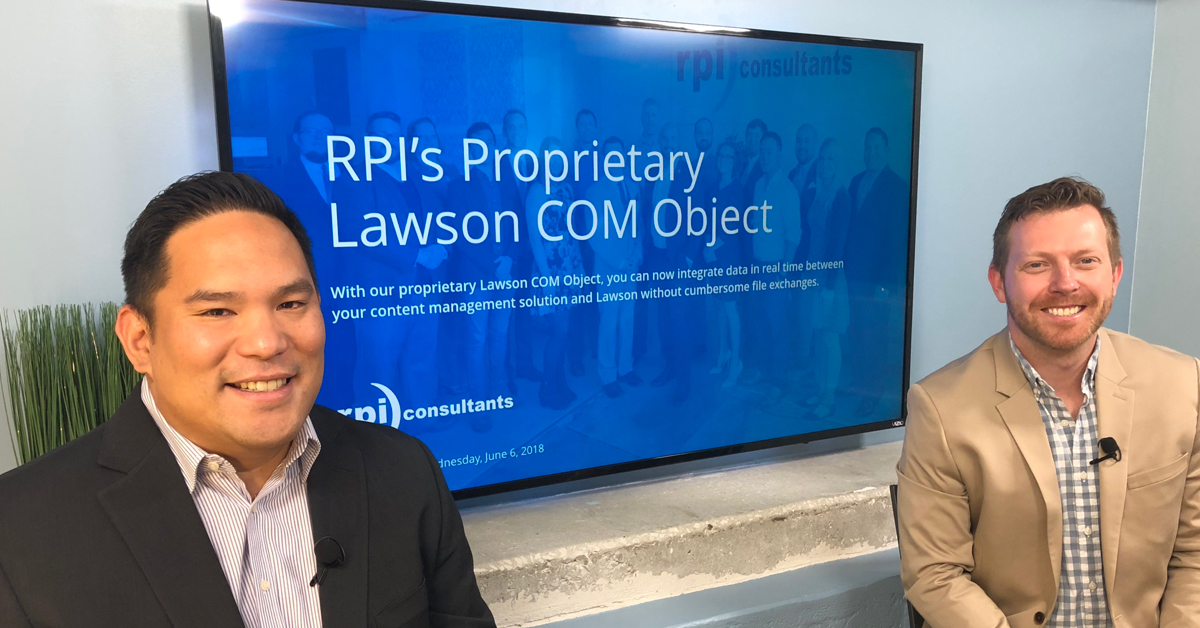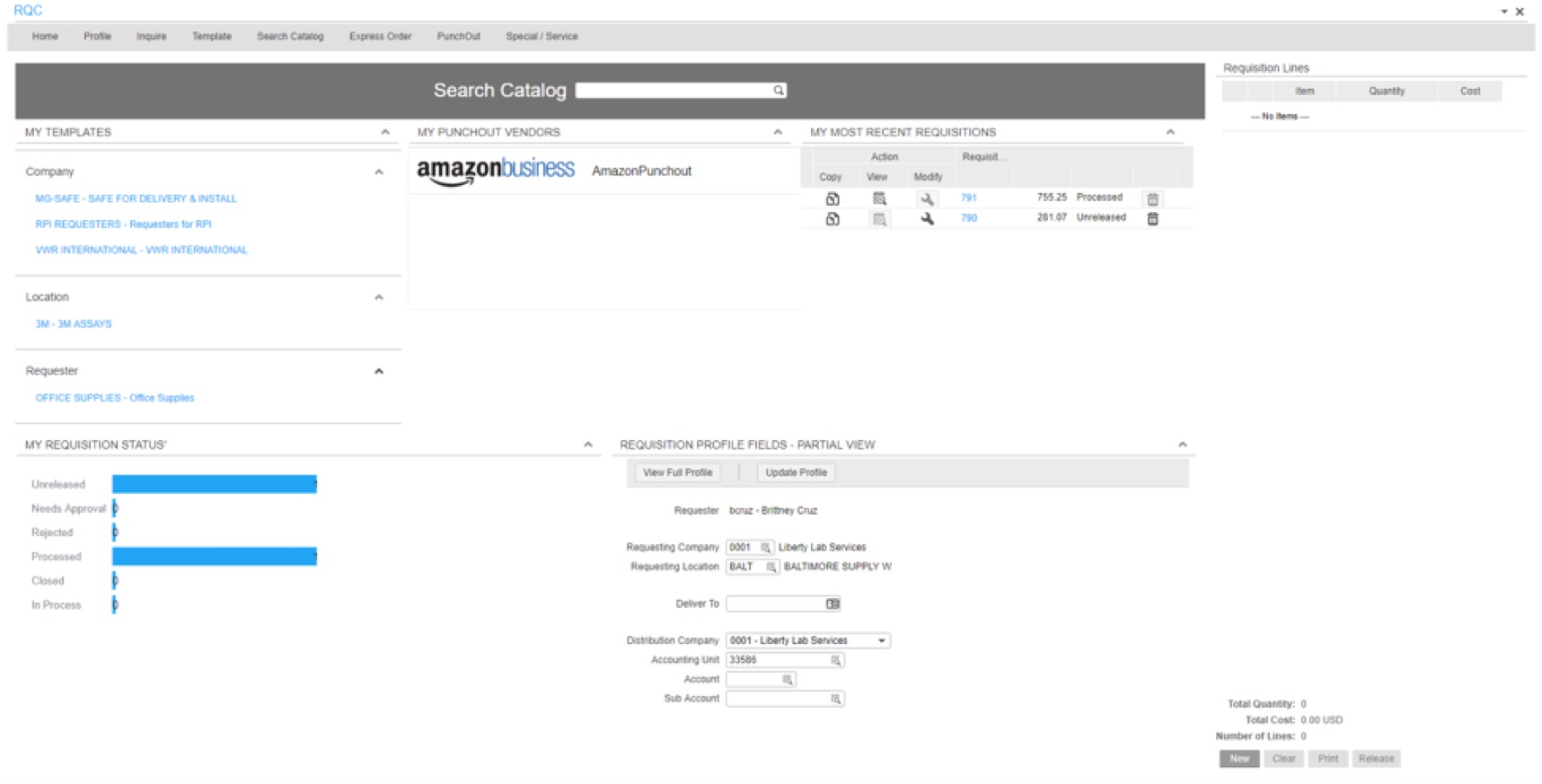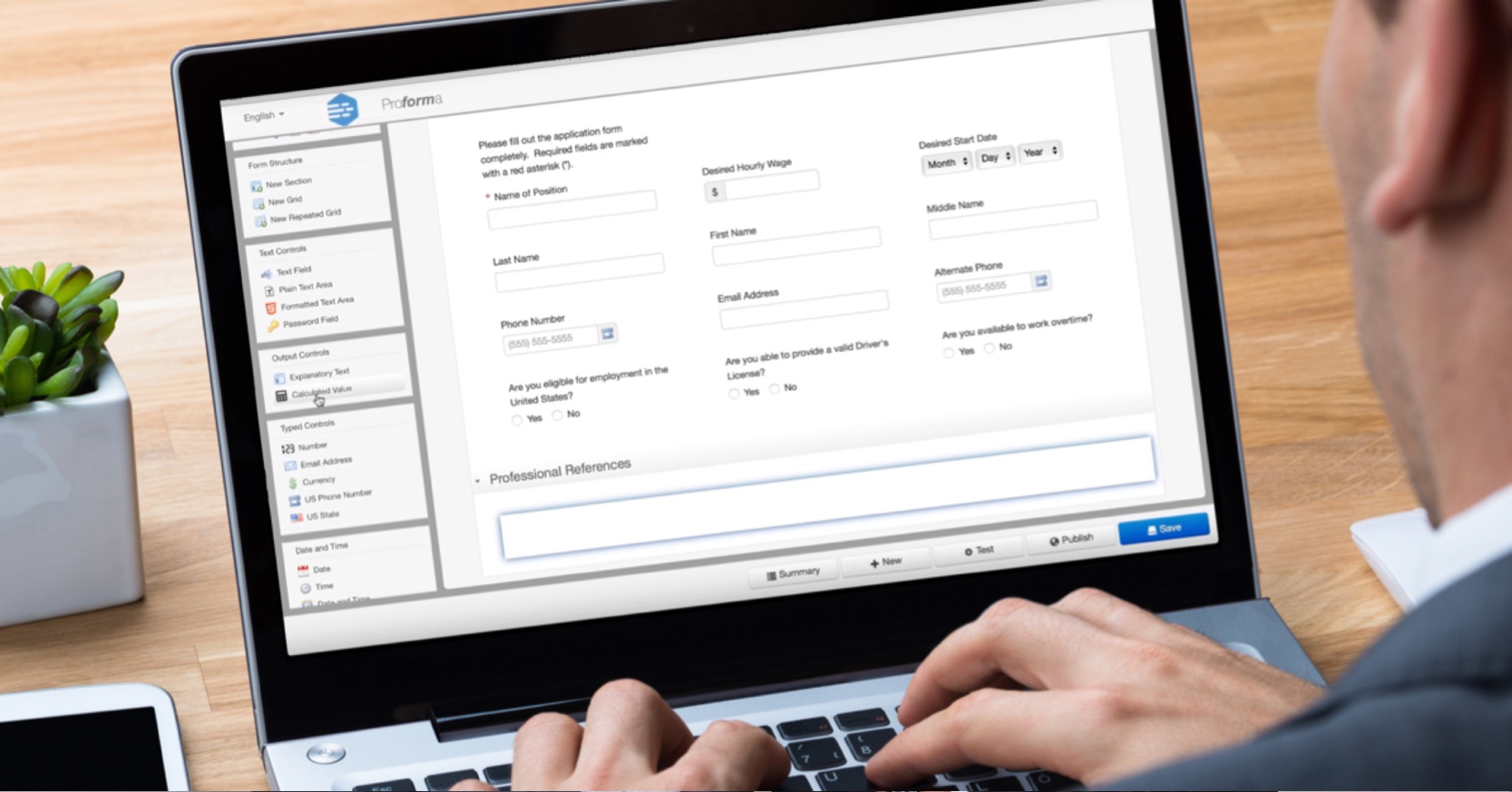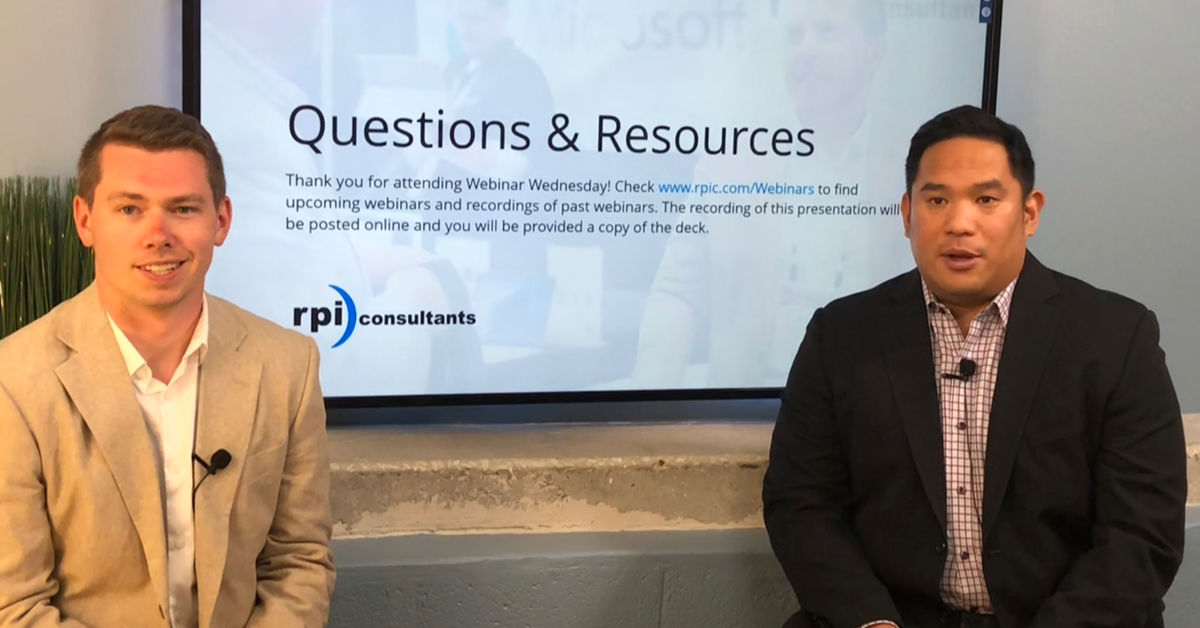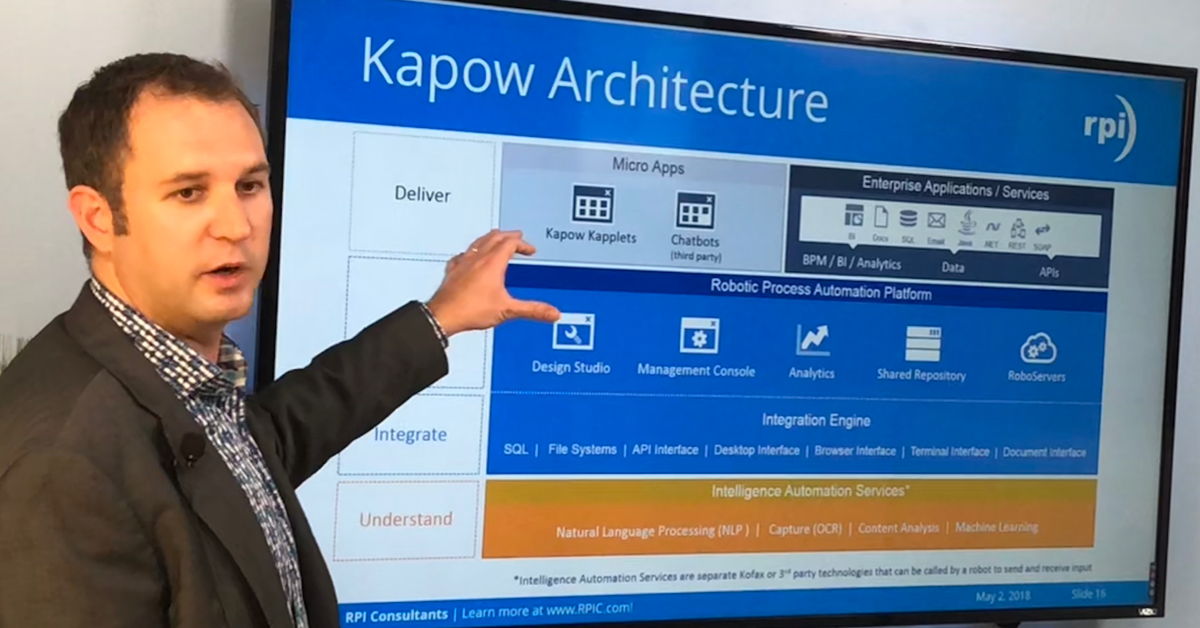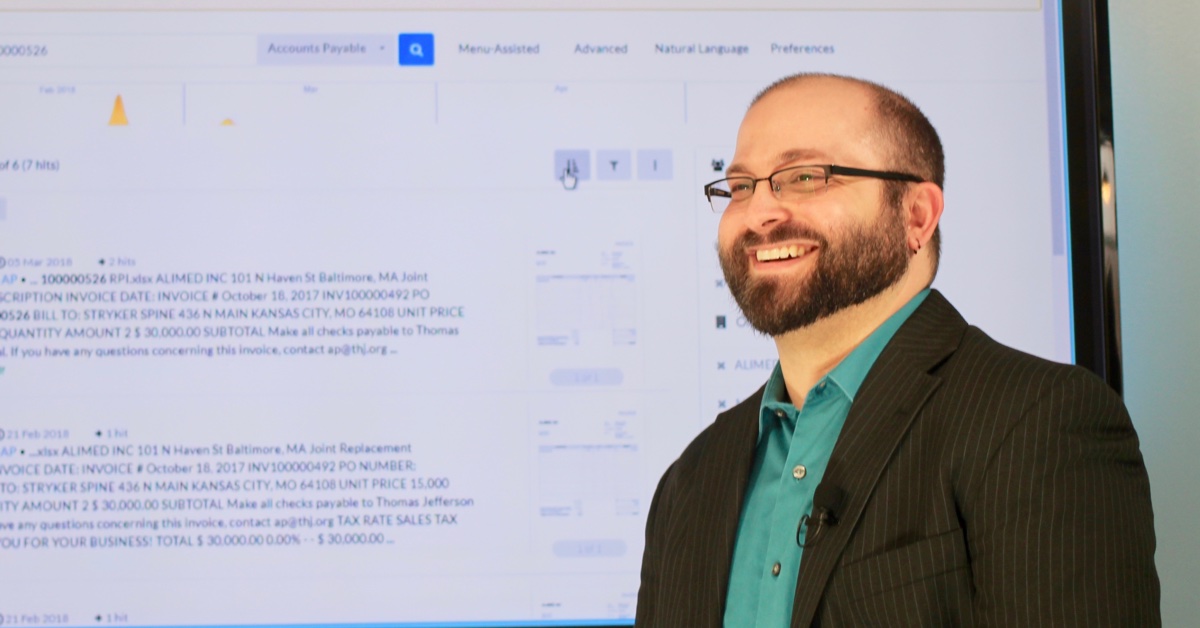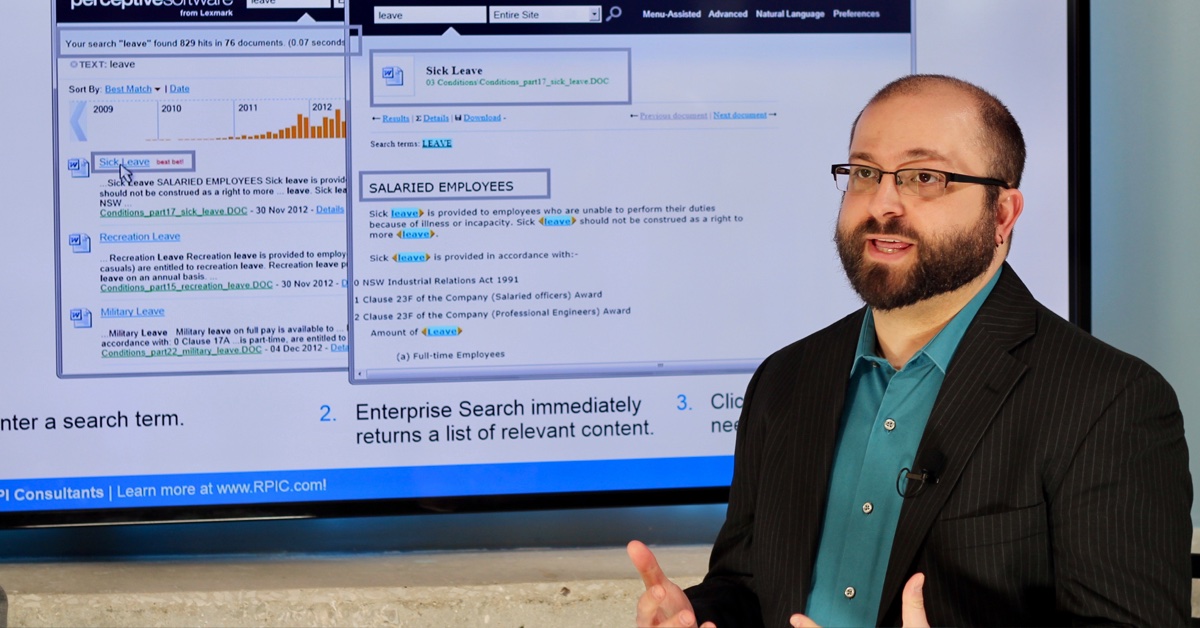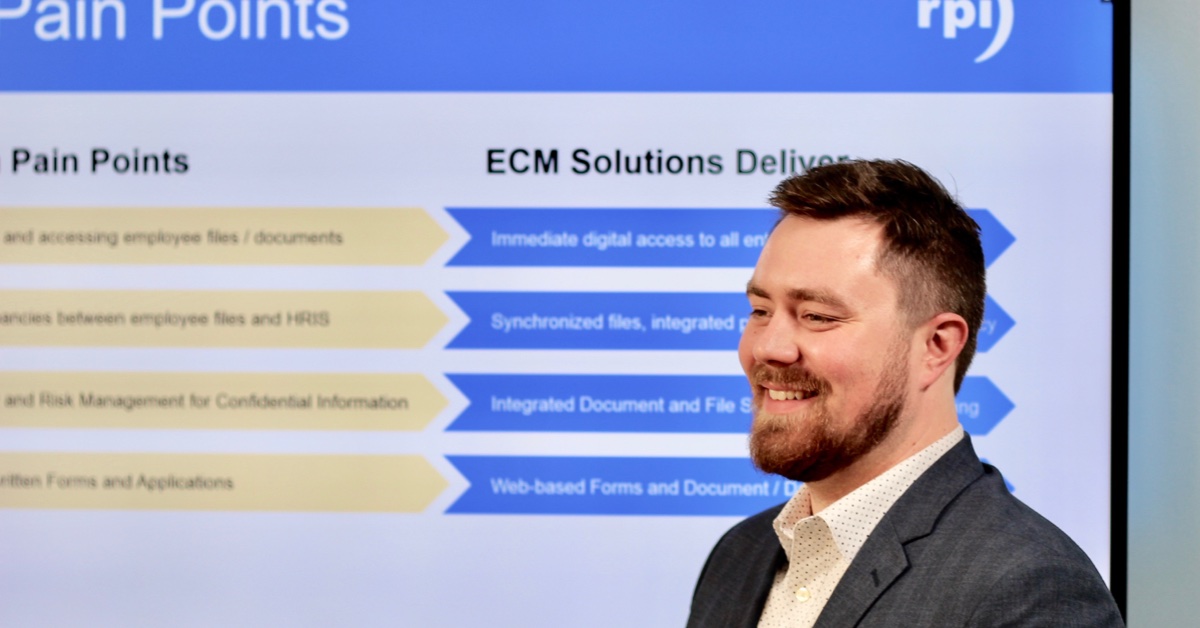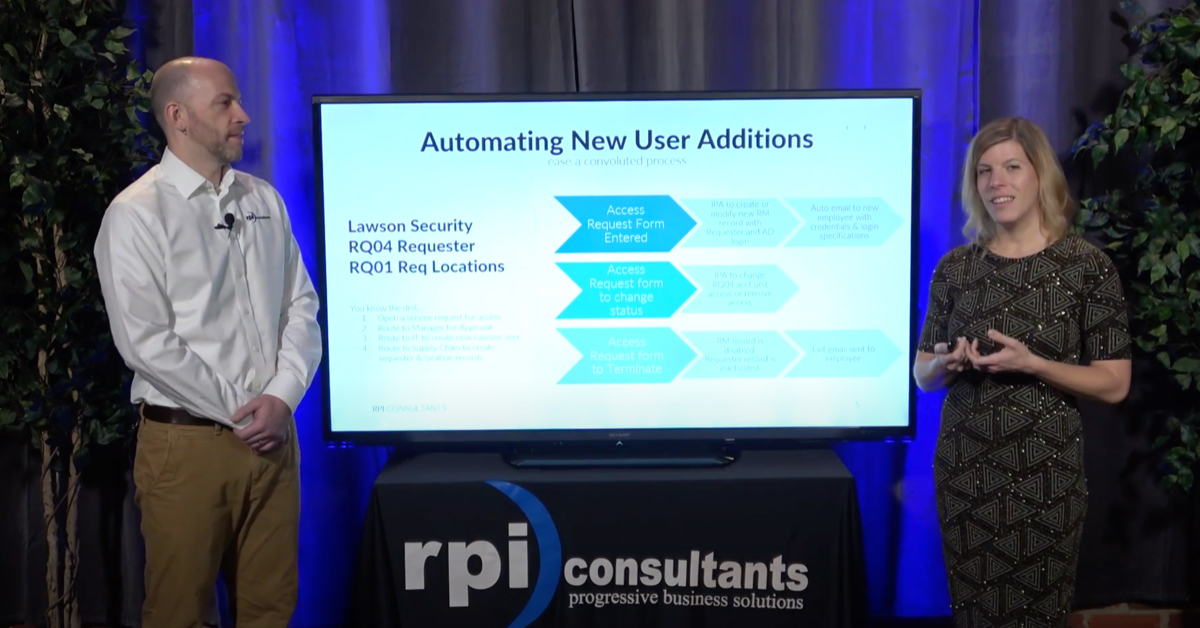Alex Lindsey:
Hello, everyone, and welcome to another Webinar Wednesday, hosted by RPI Consultants. Today, we’re going to be talking about our email capture service and how it can help you in all the different workflow and ERP integration solutions that you guys may have.
Michael Madsen:
Hello, everyone. My name is Michael Madsen. I’m a senior consultant with RPI Consultants. I’ve been working with perceptive products, Hyland products, for a little over five years, but also have some experience with other OCR platforms. I specialize mainly in accounts payable solutions, but I also work with human resources and higher education.
And I’m a part-time Dungeon Master.
Alex Lindsey:
He’s a level three wizard. My name is Alex Lindsey. I’m a senior solution architect. I’ve got over six years’ experience working with a lot of workflow, automation processes, and really just focusing on integrations between systems. I do have a focus on accounts payable as well. I’ve been doing that for quite a while, and then I am a whiskey aficionado, level three.
Michael Madsen:
So today, we’re going to go over a little bit, I’ll go through the agenda and what we’re going to talk about. First, we’re going to go through a little bit about RPI Consultants, who we are, what we do. We’ll move into the actual Email Capture Service overview. We’ll go through the overview of what it is, and then some additional features with it. We’ll go through some use cases and examples, and then we’ll wrap up with questions.
Alex Lindsey:
So to start, we’ll talk about ourselves because we are narcissists here at RPI Consultants, at least Mike and I are. So a little bit about us, we have over 80 full-time technical experts. We have project managers, technical architects, consultants, all working to basically help you find solutions for your ERP integrations or your workflow processes, anything like that. We also offer managed services agreements. So if you are kind of in over your head as an administrator and you need some additional help, we can serve that. We set up a ticket system for you. And we also work with a lot of software firms, so Lawson Infor, Kofax, Readsoft, Hyland, OnBase, and Perceptive. So basically, we cover the gamut of different solutions you can do across your enterprise.
Michael Madsen:
So now we’ve gone over what our RPI is, we’ll start talking about the actual EC Service and why you guys are here. The email capture service is an RPI proprietary product, so we actually developed this project in-house, which makes customization very simple. We can just talk to our developers, get things customized and out the door, you don’t have to wait on any third party. It’s a simple end user interface for configurations. So we actually have a GUI with EC service which kind of simplifies setting up inboxes and import configurations, things like that. Its email-service agnostic, so we can pretty much make it work with any email server you might have. Simple integration options with ECM and ERP. What we mean by that is we can actually connect, for example with ImageNow, we can connect directly with integration servers to move those attachments from emails from EC service directly to ImageNow. So we don’t actually have to always rely on an import agent method or something like that.
As far as pricing, it starts at 5,000 dollars. It includes the license, the initial set-up, the configuration and it’s for up to two environments for prod and non-prod.
Alex Lindsey:
So some of that meta-data you can get, and one of the big benefits you can get using EC services. We’ve done a previous webinar on this, but to call this out again, we can grab a lot of metadata from your emails to essentially apply logic down the stream for a document that basically is entering a workflow system or entering a system to be managed in some fashion. That includes your sender data, including your email address, the user, maybe the user account, the subject line, the number of attachments, and the received date and time versus the processed date and time. On the next screen I’ll show you what we’re talking about there.
So essentially, we have a sender email, subject line, so if you have vendors that will automatically put certain details or data in there, that you can make decisions on where it needs to go for approvals or for review, just the division responsibilities, you can use these type of fields to automate certain processes.
You also have your “Received at,” and your “Processed at,” which may seem they are either or basically at the exact same time, while in reality, they’re not. The big benefit of that in tracking this, and again this is a table within a sequel database that you can then use to audit basically and layer on. Setting up an email capture service can be stressful sometimes, especially if you haven’t done one before, so this kind of gives you some visibility into that process.
Receive date, or “Received at,” for instance, is the time in which the document actually entered your email inbox, and the “Processed at” is the time when it was processed at, for instance, when we’re using integration server to push it into Perceptive, at that point in time is when we actually create the document within the system.
You also have number attachments versus number downloaded. Ideally, that is the same number, but at times, you may notice a supplier or someone had sent in 15 attachments or 20 attachments and you only notice that 15 enter the system for a particular workflow review, and then you can use this table to track down, “Okay, I knew it. This email can in at this time, it was sent by this person, I see that there were 15 attachments, and only 10 of them came in.” Then from there, you can kind of investigate and work yourself forward from there.
Michael Madsen:
Right, and to piggy back onto that, to really show the true auditing power of EC service, that’s kind of what Alex is talking about. The “Received at” time if we ever had an issue where maybe EC service went down, or something like that, we would see the discrepancy between the “Received at” and the “Processed at.” Going along with those number of attachments, we could create really simple queries that just say “Show me everything in the table where the two columns don’t add up,” and we easily see what could be our problem emails. Sometimes there may be graphic images or something like that, that we specifically set not to read in, where those numbers may have a discrepancy, but this gives you an idea of what to look at and where to search.
This is just another example of an EC service base, this is just another table. Again, these are just small screen shots of a larger table, so there are lot more columns here. WE kind of just wanted to show right here that this is the table specific for documents, this is the table specifically for attachments that were pulled from emails. We have our integration column right here, which we can take a look at what the unique ID was that was passed from Image Now, in this case we’re using it with Image Now and Integration Server. We actually have a record of what that unique ID was for that transaction.
We also have doc file names where we mark down the name of each attachment file, so this just makes it easy for us to go in, figure out what the email ID was of the original email, link back to the document table we can find literally every step of the process to find any issues that we ema have, or anything like that.
So now we’ll move on to some of the technical specifications of EC service. EC service runs as a Windows service, so it can either go on your existing application server, web server, or mode agent server, whichever server you wanna put it on, we can get it on there and connect it. It can either run a separate database, its own EC services database, or we can piggyback of, say your I-Now database or any other database you have set up. It really doesn’t need access to anything else, so everything EC service-related can be stored in its own tables without relying on another table. The attachments are integrated using ECM integration server or exported. So we talked a lot about things like integration server, and pulling them automatically in, but that may not work for every customer, or every business process. So there is an option for EC service to drop the attachments into, say an import directory on the server so that they can be manually imported using a different import method.
And then finally, customized email and storage based on retention policies. So, what we’re talking about there, is once those attachments are pulled in, they will go either into a temp file to be communicated, or a temp folder or directory, to be communicated through integration server or another integration configuration. Or we have that import directory and we can set up ways to delete those attachments and file images based on your business needs.
So we already kinda talked about some of the database tables, but this is an image of the actual EC service skewing so this is just an example of where we would go to setup inboxes. So you can see we have our email address, username, password, we even have a section where we can tell it where to move those emails when they are read-in. So for this example, it’s looking in the inbox folder, and when it reads them in, it moves them to the deleted items. That’s customizable based on your business so that can be changed as needed. We also have, for example, the folder locations here, these folder locations are gonna be the locations where temp files are stored for the transmission of those into your other system.
Alex Lindsey:
Right, so when you’re setting this up for the first time, it’s important to note you’re first gonna call it your mail server. Which mail server are you actually going to access? If you are a medium-sized company, you typically only have one. If you are large industrial, or large manufacturing with sites overseas, you may have multiple mail servers covering different things. Easy to configure more than one. From there you’ll set up your inboxes. This is where you can start to use EC services across the breadth of your enterprise, essentially. For accounts payable, or for HR, you can set up an inbox for pretty much any department you’d like to set it up for and basically configure what you’re pulling into there. And then again, from the GUI, you’re now able to do this from the new GUI that’s been set up, as opposed to doing it directly in the database, so you don’t have to have some of that knowledge. It’s replicated in this new user interface. So again, you’d set your temp file locations there as well.
Michael Madsen:
Yeah, and we also have auto-reply feature so if you want to send out auto-replies when emails are picked up, we can configure that. The next point, the perceptive content Image Now indexing and custom property indexing, a lot of people may know that you can pull documents in with index structure, your standard field one through field 5 into ImageNow, with the email capture query. We’ve actually configured it to communicate custom properties, so that’s a new feature that’s really powerful, so we can get a lot more data pushed in with the invoice instead of only relying on field one through five.
And then, finally, what we’ve talked about a few times already, the export and integration. So we can either integrate though an integration server or another kind of web service, or we just work through export directories where we can drop them into a directory for file import.
Just another slide for the EC service skewing. So this is just an example of setting up customizations and what data we want to pull in with our indexing structure like field 1-5 or custom proprieties. In this example, we have our field 1-5 set up in here. You can see for the parameter values that we’re setting, we can either set a hard-coated string, we can pull in specific information from the email, like you can, this is normal functionality that you may see in other email products, but we keep that functionality where you can pull in the sender email, the subject line, whatever information you want from that email. And then down here, is our AP custom valid, where we’re actually setting up custom property. This is working with index keys and properties, very exciting.
Alex Lindsey:
And depending on the system you’re sending to as well, you can actually push into a workflow, so you can define where the entry point is for documents captured from email.
Michael Madsen:
One other configuration setting here that we wanted to point out that is also pretty exciting, is an option to include or exclude emails based on set criteria. So in this example, what we’re doing is we’re saying for all email addresses, we want to only include email imports for emails that include invoice in the subject line. For this one, we want to exclude emails that, for this example have “hello” in the subject line. So it makes it really easy to pick and choose which emails in the inbox we’re pulling in, just in case it’s an inbox that may not be used specifically for only document capture.
Alex Lindsey:
Great, so those are some nice features we’ve added to the system, but we are continuing to work on it. It’s a product we think can be improved even further. For instance, a road map we have going forward, Version 1.6, rules-based workflow routing, I think is gonna be super helpful to fully automate where the capture documents and get them into their system as well as some additional user interface updates. Version 2.0, the email body attachment storage and EC database is gonna be great. Integration with Brainware and the visibility reporting tables is also gonna be super helpful because a lot of customers that are capturing documents automatically are also using OCR technologies to essentially streamline their processes, particularly around invoices.
And then again, in Version 2.1, full Gmail API, Readsoft Process Director integration, which we’re really excited about, too, and some additional encryption and security improvements down the line.
Michael Madsen:
And, with that my friends, you’ve got mail. I apologize, I apologize. We had to do it.
Oh, now it won’t even, there we go.
Alex Lindsey:
So we have a few use case and examples to kind of help you think through the process. So if you either have an existing mail capturing process now that you like, that’s great, you can continue to use that. If you’d like to leverage some of the audit capabilities, you can explore it as well. In particular, if you don’t have an email capture process in place, there’s a lot of good use cases.
Accounts payable, we talk about it every webinar it feels like, but streamlining your invoice capture, there’s no reason why you can’t push your vendors, especially this day and age, you can’t push your vendors to start emailing just invoice documents directly in. Send that to a Brainware or a Readsoft, or a Kofax. Basically they extract data automatically and kind of automate your system from there. I mean you can also set it up for vendor statements and statement documents, vendor update information, anything like that you can basically cover it all in accounts payable.
Michael Madsen:
And then in HR workflows, we can pull in employee onboarding documents, disciplinary action forms, really any form that you use inside of your workflow that can be emailed, can be automated. In higher education, we talk about enrollment financially aid form submissions. A higher education example would be one of our clients use Adobe Echo Sign. Adobe Echo Sign will send a lot of different copies of that form while it’s going back and forth from the student and the employee so that users can enter data, send it for more data to be entered, and then finally once the form is complete, it sends one single email with the PDF and CSV, and the end of that subject line says, “Signed and filed.”
So we don’t want to pull in all of those extra emails that are going back and forth while that form is getting completed. We just want the signed and filed email. So kind of with that configuration we showed a few slides back, where we can set specifically what we want to see in the subject line, if we just search for that signed and filed, it’s only pulling in the emails that we need and ignoring the rest. So it’s really great functionality for situations like that.
Alex Lindsey:
Obviously, those are just a few of the ones you see, but it can be used for insurance companies, for claims processing, for healthcare solutions as well, for emailing in particular forms. It can basically be used in any number of work [inaudible 00:16:38].
Michael Madsen:
Right, we can talk for days about all of the different options you can utilize this with, but really if it’s anything emailed, we can automate it.
So now we’ll move over to questions, so if anybody has any questions, please just reach out and type it out in the go-to meeting interface.
Speaker 3:
First question here, “How long does it usually take for a standard implementation?”
Michael Madsen:
It really depends on the size, but for a standard implementation, we generally say about 10-20 hours.
Speaker 3:
Alright, second question came in. “Is there any limit to the emails or number of inboxes we set up?”
Michael Madsen:
There’s no limit, obviously it just depends on hardware, but I’d be surprise if you could have that many that it would cause an issue.
Alex Lindsey:
There is no limit.
Michael Madsen:
Yeah, whatever you want, we can do it.
Speaker 3:
Alright, that’s the end of our questions.
Alex Lindsey:
So we have a few additional resources here. Feel free to check out our RPI knowledge base. So if you have just common things we run into every day with our software suites that we work with and we try to post articles here as often as possible to help you guys better manage that. For additionally webinars, if you want to see through some of the items that we’ve done and covered in the past. For instance, the first EC service one here, just kind of introducing the products, please feel free and explore those.
And again, thank you guys very much for joining us.
Michael Madsen:
Thank you.






